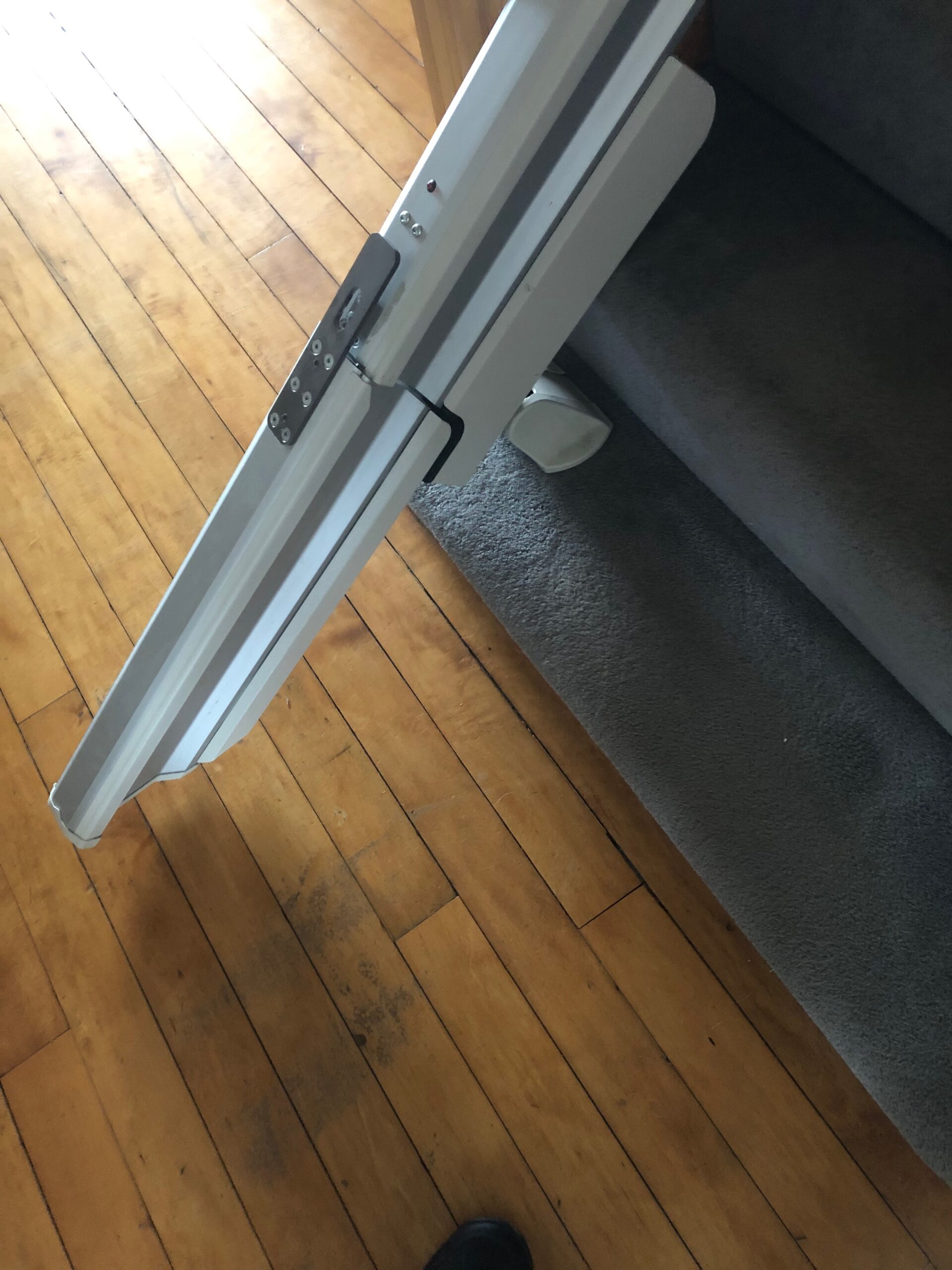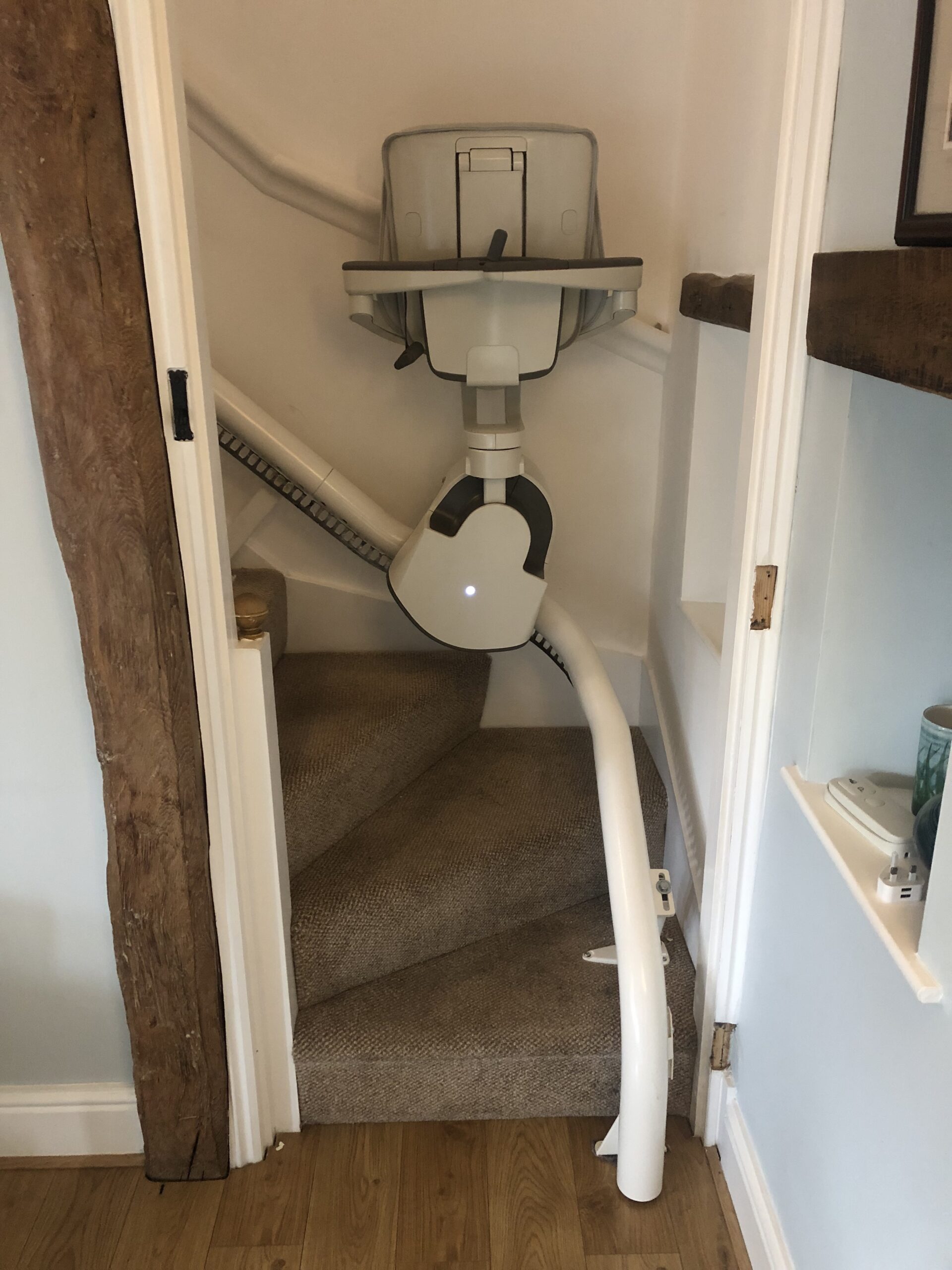
A retractable stair lift rail is useful when the stairlift would otherwise block a doorway or corridor. This is an option on various straight stairlifts including the Stannah stairlift 600, for example. As the stairlift climbs the rail, the rail will automatically retract back onto itself as it goes.


This is a useful feature when the rail would otherwise block space at the base of the stairs. The retractable rail isn’t the only option though, and some stairlifts have other methods of avoiding becoming a nuisance if there’s a space issue.
Here for example you can see the use of a “drop nose” rail on the Thyssen Flow stairlift. This setup means the stairlift rail can continue all the way to the base of the stairs, but that it doesn’t become a hazard or obstacle, as a longer rail configuration might do.


Retractable Stair Lift Rail Vs. Drop Nose Rail
A retractable stair lift rail is useful in many scenarios. However, often we will choose the drop nose rail over the retractable rail. In the image above, you can see the drop nose rail in both pictures. On the left, a standard rail would block the cubby hole to the right of the stairs. The picture on the right shows the drop nose rail avoiding the blockage of the downstairs door.
A retractable rail could avoid these obstacles too. However, retractable rails do present potential problems. For example, if the rail should develop a fault, a doorway might become temporarily blocked. This could be a serious problem in an emergency.

Retractable rails do add to the cost of a stairlift too, since you’re also paying for the retractable mechanics; and they can add to the size of your rail, complicating the installation. Whenever there are moving parts, there’s more things to potentially go wrong too!
This is why, on curved stairs, we will opt for a Thyssen stairlift rather than use a retractable stairlift rail. These are also excellent stairlifts when it comes to installations on narrow and tight stairs.
Summary
Retractable stairlift rails are a great idea in certain situations. We like them for straight stairs when there’s no other complications. There are curved stairlifts with retractable rails, however, we prefer not to use them and to use instead the Flow stairlift models which offer the drop nose rail configuration.
If you have an awkward staircase, or want some help, give us a call and book a free assessment. Call 0800 046 3438 or visit our contact page here.
You can also download our free stairlift guide below and visit our YouTube channel here.
See also our post 8 ways to save on a stairlift.


